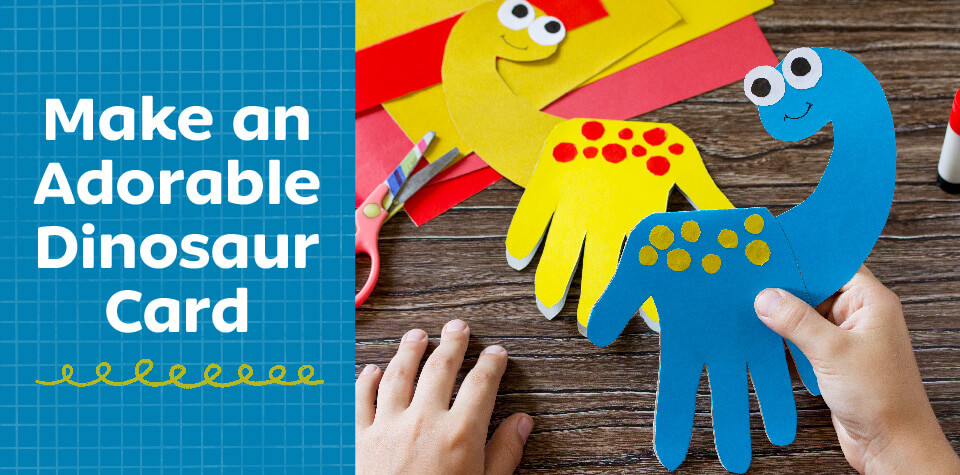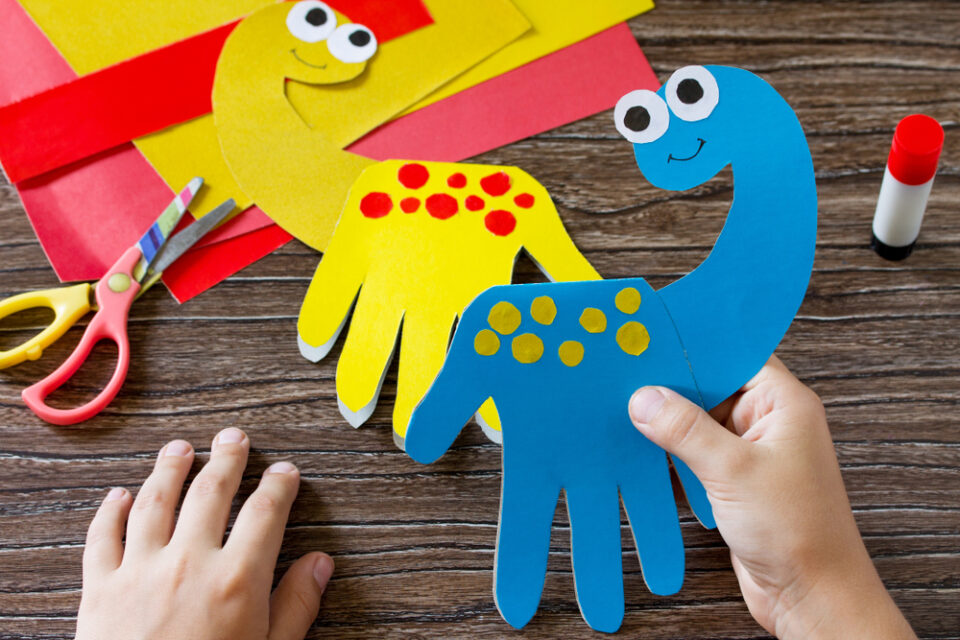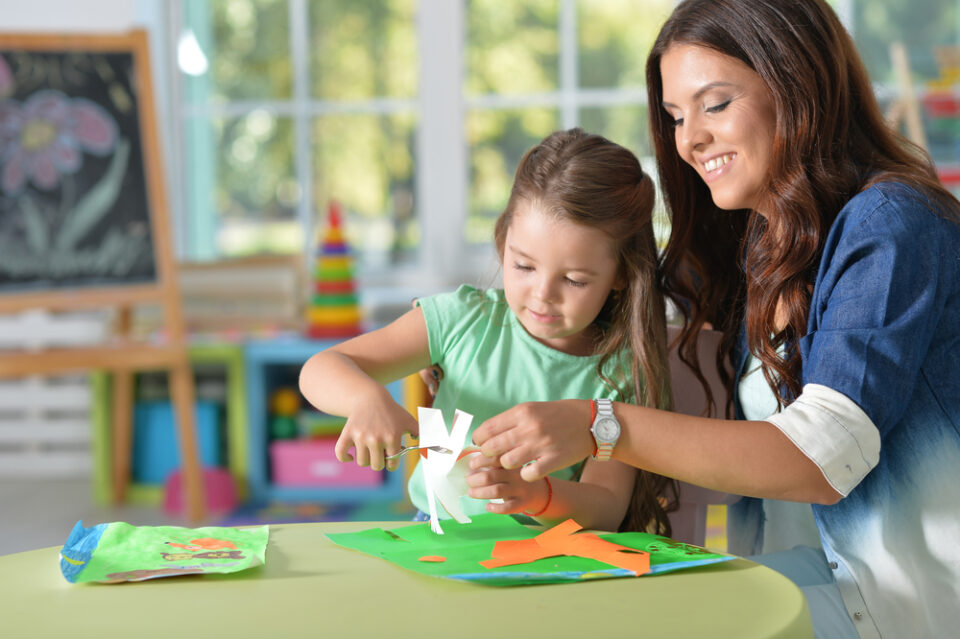
Delight Dino-Lovers with an Adorable Dinosaur Card
They’re big. They’re strong. And they roar so loud! (At least in movies and our imaginations. Scientists think that the sounds they made weren’t really roars.) Dinosaurs have long captivated humans—especially children.
Creating a prehistoric reptile of their own is a wonderful way for your kids to learn more about the dinos they’ve seen on TV and in the natural history museum. Here’s one of our favorite dinosaur crafts, sure to excite and delight your aspiring paleontologists. But first, a quick run through some dino facts.
What Are Dinosaurs?
Dinosaurs are reptiles that lived on Earth long before humans. (You may have heard they’re closely related to birds, which is true, but they’re still classified as reptiles.) The first dinosaurs appeared over 200 million years ago, and they were the dominant creatures on the planet until about 65 million years ago.
The first humans didn’t appear until about 2 million years ago. So if dinosaurs lived long before humans, how do we know anything about them? Over the centuries, people have discovered fascinating dinosaur fossils. Fossils are preserved remains (bones) or impressions of living things left in rock. Archaeologists have found fossils on every continent (including dinosaurs buried in ice), and these discoveries have taught us a lot about life on our planet in the age of the dinosaurs.
Different Kinds of Dinosaurs
Dinosaurs ruled Earth for about 150 million years. Humans have discovered over 700 species of dinosaurs that lived during that time. They could be as small as toddlers or as large as a two-story house. Here are a few of the many dinosaur species that once roamed our planet:
Tyrannosaurus rex (T. rex)
T. rex was a fierce predator that lived during the Late Cretaceous period (around 65 million years ago). This creature could be up to 40 feet (12 meters) long and weigh up to eight tons (over 7,000 kilograms). That’s close to the weight of a large African elephant and the length of a school bus.
T. rex was a carnivore, which means it ate meat. Fossils show this hunter had 60 sharp, serrated teeth and a jaw that could exert around 35,000 newtons (a measure of force) of pressure. To put that in context, a typical human has a bite power of only about 300 newtons.
Compsognathus
This dinosaur belonged to the same family as T. rex, but it was much smaller. In fact, Compsognathus is one of the smallest known dinosaurs, reaching only two to three feet long (60–90 centimeters) and weighing just 12 pounds (around six kilograms). That’s only a little heavier than the biggest chickens.
Compsognathus ate insects and small animals. It had sharp teeth perfect for hunting and chewing meat—though some fossils have revealed complete skeletons inside its stomach, suggesting the creature sometimes swallowed its prey whole.
Stegosaurus
Stegosaurus was an herbivore—a plant-eating dinosaur—that lived during the Late Jurassic period (159–144 million years ago). The average Stegosaurus was around 30 feet (nine meters) long and weighed about five tons (nearly 5,000 kilograms). Its name comes from the Greek word stegos, meaning “roof,” referring to the two rows of armor plates on the dinosaur’s back. The paleontologist who discovered the first Stegosaurus fossil thought the plates looked like the tiles on a roof.
Stegosaurus used its armor plates to protect itself—which was important, because it was a slow-moving dinosaur. It also had a tail covered in spikes, which it would swing at other dinosaurs to keep them away. Stegosaurus’s tail was so powerful that it could puncture bone (and there are fossils to prove it).
Triceratops
At first glance, Triceratops looks ferocious. This dinosaur was 30 feet (nine meters) long, weighed eight tons (over 7,000 kilograms), and had a sharp, parrot-like beak and a spiky head plate, or frill, with two big horns.
But this dino from the Late Cretaceous period was an herbivore. That sharp beak was perfect for chewing palm fronds and other tough plants, and the horns on its frill were likely used for protection.
Brachiosaurus
Brachiosaurus lived 156–154 million years ago during the Jurassic period and is one of the largest dinosaurs ever discovered. Eighty feet (24 meters) long and 39 feet (12 meters) tall, it weighed over 28 tons (over 25,000 kilograms). That’s more than three times heavier than T. rex! In addition to its incredible size, Brachiosaurus is best known for its long, giraffe-like neck.
Similar to giraffes, Brachiosaurus was an herbivore that used its neck to reach leaves and branches high in the trees. Because of its massive stature, Brachiosaurus had to eat a lot to stay healthy. Paleontologists estimate this dino consumed up to 440 pounds (200 kilograms) of vegetation every day.

Create a Dinosaur Handprint Card
Each dinosaur was a uniquely fascinating creature. Fortunately, there are easy dinosaur crafts for a lot of kids’ favorite species! Kids can use straws and marshmallows to build a T. rex, create salt dough dinosaur fossils, or turn their handprints into the adorable Brachiosaurus you can make with the directions below.
This paper dinosaur craft is perfect for kids of all ages and makes a whimsical card for Mother’s or Father’s Day, a friend’s birthday, or any time your children want to give a fellow dinosaur lover something special.
Older kids can complete each step of this activity on their own, but younger kids may require an adult’s assistance.
Materials
- Cardstock (in your children’s favorite colors)
- Child-safe scissors
- Nontoxic glue
- Colorful markers
- Pom-poms (optional)
- Googly eyes
- Pencils
Directions
- Fold a piece of cardstock in half. Place one hand on the paper with the heel of the hand against the fold, then trace the outline with a pencil.
- Keeping the fold intact, cut out the handprint with scissors. This will trim both sides of the cardstock simultaneously.
- Draw the head and neck of a Brachiosaurus on the leftover cardstock (see image above). Cut out the dinosaur’s head and neck and glue them to the inside of the front of the folded card (next to the pinky finger).
- Glue two googly eyes onto the dinosaur’s head and draw a funny smile. Cut out colorful spots or grab a few small pom-poms and attach them to the dino’s back (see image above).
- Open the handprint card and write a message on the inside. Now the dinosaur is ready to put a smile on someone’s face!

Grow Your Children’s Creativity with Little Passports
Little Passports offers award-winning, hands-on projects to encourage your kids to learn while they play. Once they master how to make a dinosaur card, your children can discover how people dig for dinosaurs in Argentina with our Dinosaur Dig Excavation Kit and practice paleontology in Morocco with our Create and Play: Dino Explorer set.
If your kids crave more creativity, our Craft Discovery subscription box is sure to be a hit. Each month, they’ll receive a seasonal craft kit that brings new ideas about art, science, and world cultures right to their doorstep!
